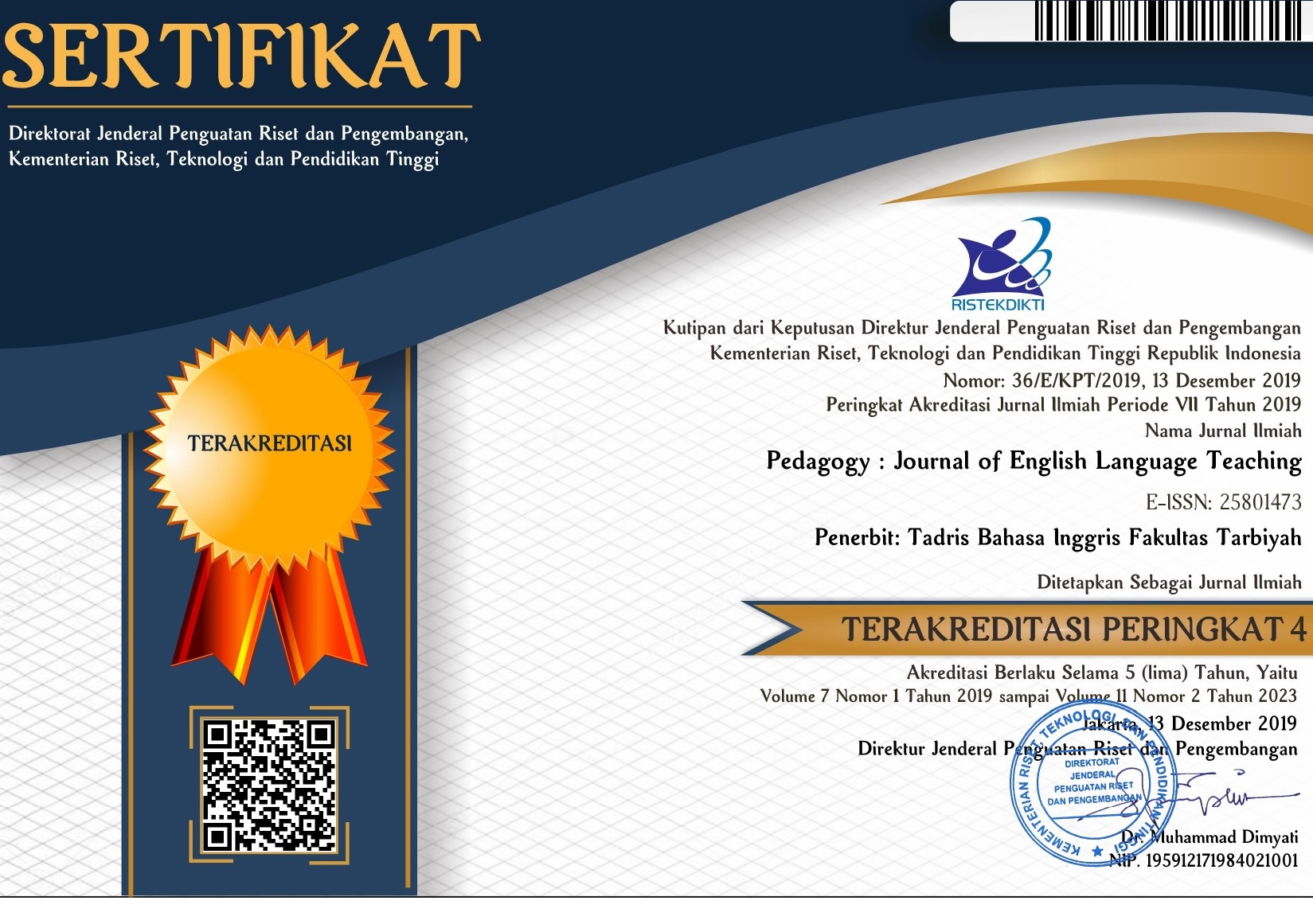Representation of Culture in EFL Textbooks and Learners’ Preference
DOI:
https://doi.org/10.32332/pedagogy.v7i2.1647Abstract
This research represents the importance of culture in English as Foreign Language (EFL) Textbooks and learners' preference in the English classrooms. The study analyzes the cultural representation in three types of culture: source, target, and international of English as a foreign language (EFL) textbooks used in English classrooms at public universities in Saudi Arabia. Through the method of content analysis, it was discovered that a cultural representation balance was not maintained, indeed, as the contents were skewed toward target culture representation. Analyses of the study data, including a survey taken by EFL learners (N= 120), showed that source culture was the least interesting for these participants. The analyses also showed that skill development and target and international cultural training were prioritized by the study subjects. The findings of the current study suggest the need for thoroughness in developing rigorous frameworks for EFL textbooks' cultural integration, and for future experimental trials focusing on culture and foreign language research.















